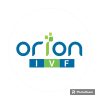IVF Process Explained: Step-by-Step Insights for Aspiring Parents

In recent years, advancements in medical technology have offered hope to countless couples struggling with infertility through the process of In Vitro Fertilization (IVF). This transformative procedure involves various stages, each crucial for its success. Whether you’re considering IVF for the first time or seeking to deepen your understanding, this guide provides a detailed walkthrough of what to expect at every step of IVF treatment in Wakad.
1. Introduction to IVF
In vitro fertilization, commonly known as IVF, is a fertility treatment where fertilization occurs outside the body. This process involves stimulating the ovaries to produce multiple eggs, retrieving them, fertilizing the eggs with sperm in a lab, and then transferring the resulting embryos into the uterus. IVF is a well-established procedure that has helped many couples achieve their dream of parenthood.
2. Initial Consultation and Assessment
The journey begins with an initial consultation at a fertility clinic. During this crucial step, the fertility specialist conducts a thorough assessment of both partners’ medical histories and conducts tests to identify any underlying issues affecting fertility. These tests typically include blood tests to assess hormone levels, semen analysis for the male partner, and imaging tests (such as ultrasound) to examine the reproductive organs.
After gathering all necessary information, the fertility specialist devises a personalized treatment plan tailored to the couple’s specific needs. This plan outlines the steps of the IVF process, discusses potential risks and success rates, and addresses any concerns the couple may have.
3. Ovarian Stimulation and Monitoring
Once the treatment plan is finalized, the female partner begins ovarian stimulation. This phase involves the administration of fertility medications to stimulate the ovaries to produce multiple eggs instead of the usual single egg that develops monthly. The response to these medications is closely monitored through blood tests and ultrasound examinations to track hormone levels and follicle growth.
Timing is critical during ovarian stimulation, as the goal is to retrieve eggs when they are mature but before they are naturally released from the ovaries. Adjustments to medication doses may be made based on the monitoring results to optimize the number and quality of eggs retrieved.
4. Egg Retrieval Procedure
When the monitoring indicates that the eggs are mature, the egg retrieval procedure is scheduled. This minor surgical procedure is performed at the fertility clinic under sedation or anesthesia to ensure the comfort of the patient. Using ultrasound guidance, a thin needle is inserted into each ovary to retrieve the mature eggs from the follicles.
The retrieved eggs are then immediately taken to the laboratory, where they are examined under a microscope to assess their maturity and quality. The male partner provides a semen sample on the same day, which is processed to isolate the healthiest and most motile sperm for fertilization.
5. Fertilization and Embryo Development
In the laboratory, the retrieved eggs and prepared sperm are combined in a specialized culture medium to facilitate fertilization. This process, known as insemination, allows the sperm to penetrate the egg naturally. In some cases, Intracytoplasmic Sperm Injection (ICSI) may be used, where a single sperm is injected directly into an egg to achieve fertilization.
After fertilization, the embryos are monitored and cultured in the laboratory for several days. The embryologists assess their development, looking for signs of healthy cell division and growth. Typically, embryos are cultured for about 3 to 5 days before the next critical step in the IVF process.
6. Embryo Grading and Selection
Embryo grading is a crucial aspect of the IVF process, as it helps the embryologist identify the embryos with the highest potential for successful implantation. Grading is based on criteria such as the number of cells, cell symmetry, and fragmentation. The top-quality embryos are selected for transfer, while others may be cryopreserved (frozen) for future use, depending on the couple’s preferences and the clinic’s recommendations.
7. Embryo Transfer
Embryo transfer marks a pivotal moment in the IVF journey. This procedure involves carefully placing the selected embryos into the woman’s uterus using a thin catheter. The number of embryos transferred is typically determined based on factors such as the woman’s age, embryo quality, and previous IVF outcomes. The process is guided by ultrasound imaging to ensure precision and accuracy.
Following embryo transfer, some women may be prescribed medications such as progesterone to support the uterine lining and enhance the chances of successful implantation. The wait begins, typically around 10 to 14 days, for the pregnancy test that will reveal whether implantation has occurred.
8. Pregnancy Test and Follow-Up
Approximately two weeks after embryo transfer, a blood test is performed to measure the levels of human chorionic gonadotropin (hCG), a hormone produced during pregnancy. This test, often referred to as the beta hCG test, provides definitive confirmation of pregnancy. If the test is positive, further monitoring through ultrasound scans will follow to ensure the pregnancy progresses as expected.
For couples who achieve a successful pregnancy through IVF, ongoing prenatal care and support from the fertility clinic are essential. Regular appointments will monitor the health of both the mother and the developing fetus, providing reassurance and guidance every step of the way.
9. Emotional and Financial Considerations
Throughout the IVF process, couples may experience a range of emotions, from hope and excitement to anxiety and disappointment. It’s crucial to acknowledge and address these feelings openly, whether through counseling, support groups, or discussions with loved ones. Financial considerations are also significant, as IVF can be costly, and insurance coverage varies widely. Understanding the financial commitment and exploring available resources can help couples make informed decisions about their fertility journey.
Conclusion
In conclusion, the IVF process is a complex yet hopeful path toward parenthood for many couples facing infertility. With advancements in technology and personalized care plans, fertility clinics strive to maximize success rates while supporting couples through every stage of treatment. By understanding the steps involved, managing expectations, and seeking support when needed, aspiring parents can navigate the IVF journey with confidence and optimism.
Embarking on IVF requires courage, resilience, and a supportive network. As you consider this path, remember that each step brings you closer to the possibility of welcoming a new life into your family—a journey that is as miraculous as it is transformative.

